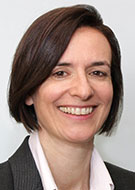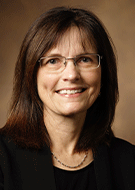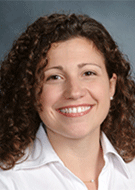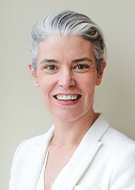Under Pressure: Educators Suffer When Forced To Choose Between Clinical and Teaching Duties
The future of radiology education at risk without institution-level protection of teaching duties




Moral distress is a deeply felt tension that occurs when an individual is unable to pursue what they strongly perceive to be the ethically optimal course of action in a given situation. Moral injury occurs when moral distress accrues over time, as conditions persist or deteriorate further.
Physicians may experience moral injury when endemic conflicts arise between what they feel is in the patients’ best interests and what the physicians are realistically able to do. In medicine, it often relates to chronically insufficient time, resources or support that may risk lapses in quality and safety. For many academic radiologists, moral injury occurs when chronically unmanageable clinical volumes decrease teaching time, leaving radiologists concerned about the future of the specialty, and the implications for patient care.
“You are not only responsible to the patient, but you have the overarching responsibility for the future generation of radiologists,” said Bettina Siewert, MD, executive vice chair radiology at Beth Israel Deaconess Medical Center, Boston. “You need to make sure that they are prepared to practice by themselves. You are looking into the future and ensuring the provision of health care in that future. It’s a large burden.”
This central conflict between clinical time and teaching time, which may lead to academic radiologist attrition. A decrease in instructional quality poses a real concern if the current paradigm doesn’t shift.
“If the education is subpar right now, and nothing changes, then radiology education could collapse in the future,” Dr. Siewert said. “This has crucial implications for patient care.”
Time Constraints Lead Some to Leave Academia
Moral distress among academic radiologists often occurs when they do not have time to teach to a high standard. Lori Deitte, MD, vice chair of Education, Radiology & Radiological Sciences, and professor of Clinical Radiology & Radiological Sciences at Vanderbilt University Medical Center, Nashville, TN, has experienced this.
“Not that many years ago, every Thursday at 10 a.m. I would go over ultrasound teaching cases for 30 to 45 minutes with the medical students and residents. I can’t build that into my workday anymore. Part of our job satisfaction comes from the joy of teaching. When we no longer have time for certain learning activities, that’s a loss,” Dr. Deitte said.

The distinction between such professional dissatisfaction and moral distress may be hard to define cleanly, as academicians may feel that teaching well is both a professional and ethical obligation. Further, both professional dissatisfaction and moral distress relate ultimately to compromised patient care, and both are important drivers of burnout.
Research by Dr. Siewert and her colleagues indicates that moral injury among radiologists leads to attrition: 28% of 93 survey respondents have considered leaving a job due to moral distress, and 18% have left a job due to moral distress. Many academic radiologists leave for jobs in private practice, where they can focus solely on clinical work and earn better salaries.
Lily M. Belfi, MD, professor of clinical radiology at Weill Cornell Medicine, New York City, sees this attrition as a significant loss for the future of radiology education. Moral distress among academic radiologists often occurs when they do not have time to teach to a high standard.
“Clinician educators are filling a huge need not just as educators, but also as role models and mentors of the next generation of clinician educators. When faculty leave academic medicine, there is an immeasurable ripple effect,” Dr. Belfi said.
“The time that you would love to have to cultivate more meaningful relationships with your learners over the course of a rotation, or four years of training, also gets eroded as your bandwidth is being taxed with higher clinical demands,”
LILI BELFI, MD
Trainees Feel Undervalued, Lack Meaningful Mentorship Relationships
Moral injury among academic radiologists is also felt among their students and trainees. As teaching time shrinks, more residents are being trained asynchronously, leading to a decline in instructional quality that has important implications for patient care and for interprofessional relationships.
“Sitting with residents, side by side in front of a workstation to go over cases, no longer happens as often,” Dr. Siewert said. “To save time, people ask residents to just send cases to their queue, where they make changes that the resident can see. It is assumed it’ll all make sense to them, but there’s no explanation, so I’m not sure that the reasons for changes are clear. We’re losing instruction if it’s not happening in real time.”
With less face time between trainees and radiologists, mentor relationships decline.
“The time that you would love to have to cultivate more meaningful relationships with your learners over the course of a rotation, or four years of training, also gets eroded as your bandwidth is being taxed with higher clinical demands,” Dr. Belfi noted.
Marion Hughes, MD, JD, professor of radiology and otolaryngology at the University of Pittsburgh Medical Center, Pittsburgh, PA, explained that trainee neglect impacts trainee morale.
“If you’re a resident, and you’re not being taught, you can feel used,” Dr. Hughes said. “You may think, ‘I’m just here to grind through the work. I’m just here to answer the phone.’ This can be really stressful for the trainee.”
Institutional, Mission-Led Changes Needed
It is suggested that in order to ease such tensions for academic radiologists, institutional-level changes are required, starting with leadership education.
“We may need to educate leaders on what it really means to be an academic radiologist these days, where the dual mission of taking care of the patient volume and educating the residents is actually not possible,” Dr. Siewert said. “At least radiology leaders are aware that there is a national radiologist shortage, but they still seem to think that current volumes are possible with the staff we have, when in fact they are not.”
Dr. Hughes emphasized that part of leadership’s responsibility is defending radiology departments from external demands in order to keep their workloads reasonable.
“Your people should feel like you have their backs, that you’re not there just to field complaints from other departments, or impose new policies,” she said. “As the leader, your people should feel that one of your major obligations and missions is to advocate for them.”
Dr. Hughes also noted that leadership must track recurring “pressure points” and mediate them.
“You must look at your pressure points, not just averages. If you are consistently overwhelming your physicians a few days a month or on call, those days will induce moral distress,” Dr. Hughes said.
Such distress, coupled with deep professional dissatisfaction, are major risk factors for burnout and attrition.
Dr. Deitte sees upcoming opportunities to integrate more case-based teaching time into academic radiologists’ schedules to prepare residents for the new oral board exams.
“The new oral board exam for diagnostic radiology residents starts in 2028. To prepare our residents for this exam and for practice, one-on-one, case-based teaching and feedback are important. We will need to redesign our clinical education to focus more on case-based teaching,” Dr. Deitte said.
There is also a possibility for academic institutions to create clinically focused positions with no research requirement, thereby assisting with clinical load and providing more instructional time to students and trainees.
“Clinically focused academic positions would only have the clinical and the teaching components, with no research requirement whatsoever,” Dr. Siewert said. “That would open up recruitment to a whole other group who may be interested in open positions with no research requirement.”
Above all, academic institutions must choose to lead by mission, not margin, Dr. Belfi said.
“At a recent American Roentgen Ray Society meeting, there were interesting conversations about the concept of ‘no margin, no mission’. But I always like to say, ‘no mission, no margin,’ especially when it comes to education,” she said. “The educational mission is core to the entire enterprise function. It is an investment in the care of future patients. When we open pathways for educators to make their work more accessible, enjoyable and meaningful, we’re directly impacting patient care in the future.”
For More Information
Read previous RSNA News articles on moral injury and burnout:
- The Effects of Moral Injury in Radiology
- Responding to ‘Relentless Growth’ of the Radiologist’s Workload
- Managing the Pressures of a Radiology Residency